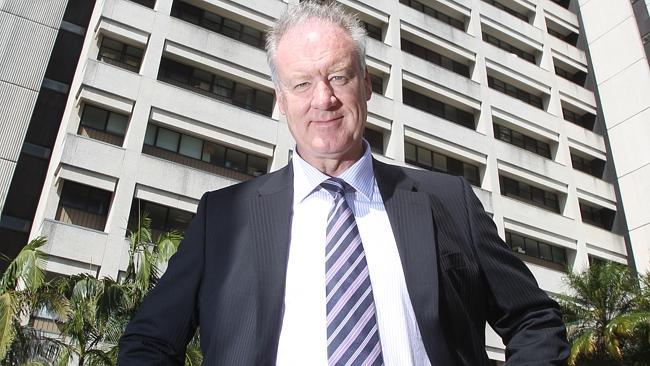Ron Calvert: How we work on waiting lists
GOLD Coast Health CEO Ron Calvert responds to reports on hospital waiting lists saying staff are working hard to improve the public health system.

Opinion
Don't miss out on the headlines from Opinion. Followed categories will be added to My News.
THE Bulletin on April 12 published a report about the confusion for patients and doctors as they were allegedly shuffled between waiting lists, seeking an endoscopy, colonoscopy or an appointment with a gastrologist at the new Gold Coast University Hospital. This report, which looked at the complexities in the public health system, was based on confidential complaints made by patients and information from GPs. Today, hospital chief executive Ron Calvert gives his lengthy response.
As chief executive of Gold Coast Health, I don’t mind taking criticism when we get something wrong. It’s my job to explain the reasons behind any mistakes we make and to outline the changes we will make to do better next time. Its part of being accountable to the local community, and its also why our Board members are drawn from that community.
I do object when the integrity of our people is challenged.
I write this in reference to an article published here last Saturday. The Editor has granted this right of reply so I will use the opportunity to explain how the article got it so wrong. There are two key reasons I am doing this — the first is that our Endoscopy Unit staff have worked so hard to improve our service that it would be an insult to their huge effort to let the inaccuracies go unchallenged. The second reason is my concern that future patients and their families will be confused about the improved level of care being provided by their local health service.
The article was headlined “Hospital shuffles waiting lists” and the main accusation was that Gold Coast Health had devised a system to move patients around various waiting lists to keep waiting times and patient numbers “artificially low.” On the evidence of a 2013 patient letter of complaint to the Health Minister, the article suggested “delays continue” contradicting a public statement I made at the time that waiting lists for urgent endoscopy cases had dropped from up to 2 years to around 6 months.
Here are the facts:
1. There are no state or national targets for endoscopy waiting lists (the subject of last week’s article). Gold Coast Health is tackling this problem because it is the right thing to do for our patients.
2. However there ARE targets for gastroenterology outpatient clinics. Our service must explain why the numbers grow, and why patients wait longer than the clinically recommended time.
3. Shuffling patients around between waiting lists as the article described WOULD HURT the performance target figures for Gold Coast Health and therefore adversely affect our funding. Moving patients from a list that is not reported to another one that is reported would negatively impact our official figures.
The information provided by the GP in their referral letter to us is the main factor that determines which waiting list a patient is placed upon. The same system is used in every Australian public hospital.
If Gold Coast Health was to “massage the figures” (a sackable offence in our organisation) it would require the organisation to do the OPPOSITE of what was described in the article. As outlined above, allocating patients to the endoscopy unit waiting list — not part of any official reporting process would effectively “hide” the patients. We don’t do this of course, because Acting with Integrity is one of our core values and to do so would certainly be bad for patients.
This is the real point. It would be bad for patients, and so we wouldn’t do it. We are an ethical organisation with a focus on our patients. We make mistakes sometimes, and we sometimes make unpopular decisions. Once or twice, we have announced something we though was true, but we got it wrong, or things change in the meantime. But we never deliberately lie.
It’s true that five hundred patients waited too long in Gastroenterology and in the interests of transparency we publish the clinic waiting times and numbers on our web site every month. In the last year and a half the number of people on our waiting list rose at one point from 23,000 to 29,000 because of a phenomenal increase in referrals from GPs. It is now back to 23,000 and the waiting times (which are more important patients than the number of patients) are falling in all but four areas.)
When I took on this role, there were patients with cancer symptoms being referred for investigation, and some of those patients waited for two years to get their results. We have reduced the wait for those most urgent patients (Category 4) to six months. Even that was too long, but with hard work, I am proud to say that not a single Category 4 patient is now without a booking offer. And the best news is that with the backlog nearly addressed, a new Cat 4 patient referred today should wait no more than a month for a procedure. We shall try hard to keep the wait down to this level for these highest priority patients.
If one person has a better understanding of how hard our local doctors, nurses, clinical staff, health administrators and support services are working to improve the public system then this column is well justified and a credit to the editor.


